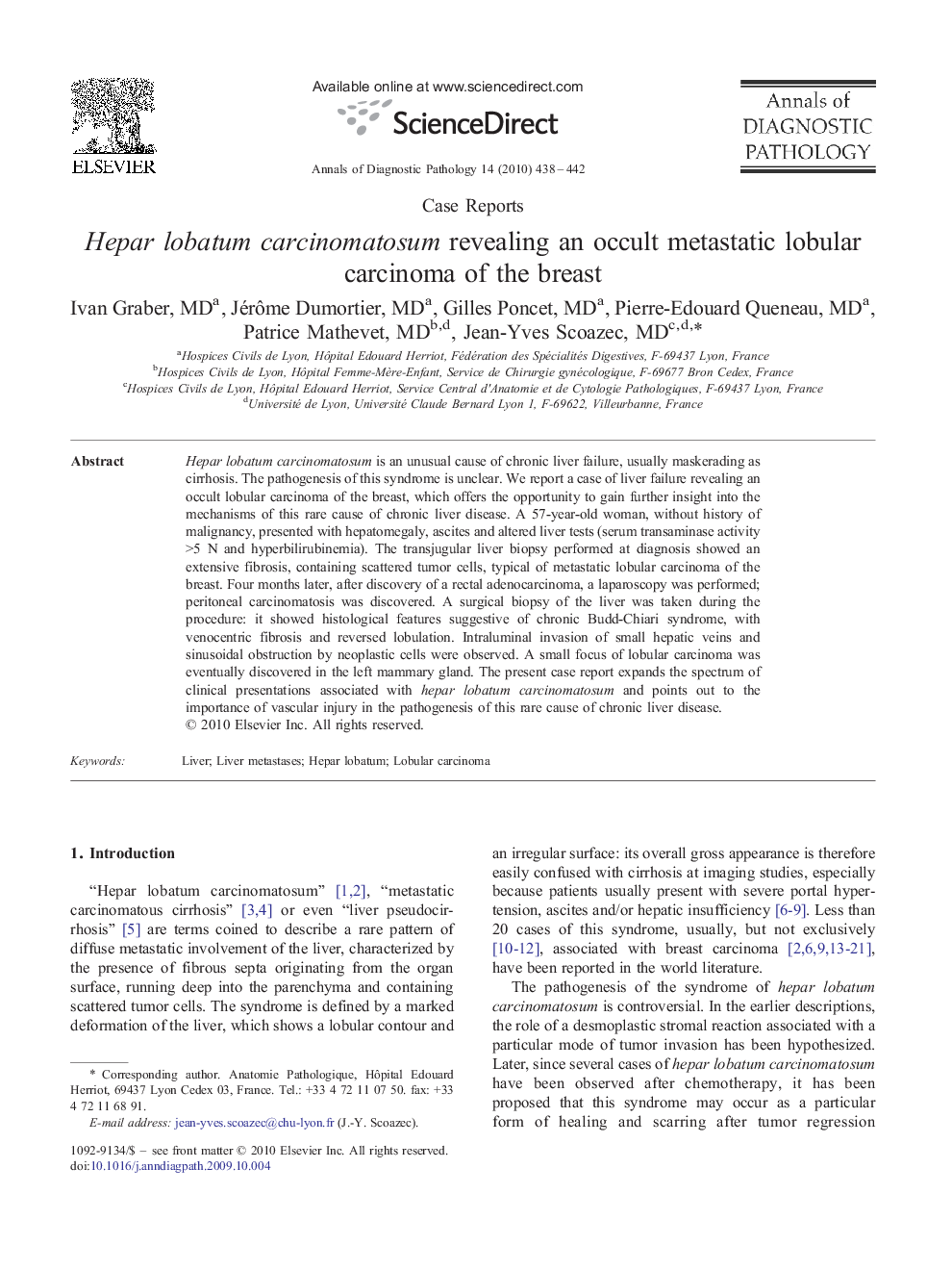| Article ID | Journal | Published Year | Pages | File Type |
|---|---|---|---|---|
| 4129961 | Annals of Diagnostic Pathology | 2010 | 5 Pages |
Abstract
Hepar lobatum carcinomatosum is an unusual cause of chronic liver failure, usually maskerading as cirrhosis. The pathogenesis of this syndrome is unclear. We report a case of liver failure revealing an occult lobular carcinoma of the breast, which offers the opportunity to gain further insight into the mechanisms of this rare cause of chronic liver disease. A 57-year-old woman, without history of malignancy, presented with hepatomegaly, ascites and altered liver tests (serum transaminase activity >5 N and hyperbilirubinemia). The transjugular liver biopsy performed at diagnosis showed an extensive fibrosis, containing scattered tumor cells, typical of metastatic lobular carcinoma of the breast. Four months later, after discovery of a rectal adenocarcinoma, a laparoscopy was performed; peritoneal carcinomatosis was discovered. A surgical biopsy of the liver was taken during the procedure: it showed histological features suggestive of chronic Budd-Chiari syndrome, with venocentric fibrosis and reversed lobulation. Intraluminal invasion of small hepatic veins and sinusoidal obstruction by neoplastic cells were observed. A small focus of lobular carcinoma was eventually discovered in the left mammary gland. The present case report expands the spectrum of clinical presentations associated with hepar lobatum carcinomatosum and points out to the importance of vascular injury in the pathogenesis of this rare cause of chronic liver disease.
Related Topics
Health Sciences
Medicine and Dentistry
Pathology and Medical Technology
Authors
Ivan MD, Jérôme MD, Gilles MD, Pierre-Edouard MD, Patrice MD, Jean-Yves MD,
